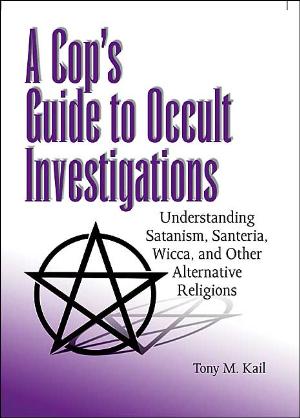 So I was wandering around the internet, as one does, and came across a couple of stories involving curious goings on at a couple of grave sites. Some of the stories were really poorly written.
Take this one, for instance in Norwalk, Conn.'s The Hour:
So I was wandering around the internet, as one does, and came across a couple of stories involving curious goings on at a couple of grave sites. Some of the stories were really poorly written.
Take this one, for instance in Norwalk, Conn.'s The Hour:
New evidence in the case of a toddler who was exhumed from her grave and dumped in a New Jersey river this week leads police to believe the body was taken for ritualistic purposes.
Capt. Richard Conklin of the Stamford Detective Bureau said Wednesday that police are targeting people of African, Central American, Haitian, Cuban or Caribbean decent who practice satanic rituals as potential suspects in the grave robbing.
Come again? The article doesn't even come close to alleging "satanic" rituals and it doesn't even have a good handle on the religion angles, non-satanic though they may be, the police are pursuing.
Or check out this section:
They now believe that a person, or persons, practicing a dark form of black magic known as Santeria or Palo Mayombe may be responsible.
"Because the baby had some mysticism to it, we believe that it was targeted," Conklin said.
According to Columbia University adjunct professor, Daniel Dawson, who has written extensively on the subject, Palo Mayombe originated in the Congo of Cuba.
Palo Mayombe is rooted in the use of elements from the natural world and is based on the belief that all natural elements have distinctive powers that can be harnessed for protection and for healing, Dawson has written.
So it's not just black magic, it's a dark form of black magic. What does that even mean? And what the heck is the Congo of Cuba? Palo did develop in Cuba and it has its roots in the Congo of Africa. And because of the poor writing or proofreading, I'm not sure if the writer intentionally or unintentionally conflates Santeria and Palo Mayombe. These are distinct religious expressions.
And while it's helpful to have information from Dawson, perhaps the reporter could interview someone who could discuss whether there's any relationship between Palo and the facts of the case in question.
The Advocate did better with its related story. Staff writer Michael Mayko looked at three local incidents involving human remains. It's written in a riveting but not too sensationalistic manner. Particularly considering it involves alligator skulls and blood-stained paper and stolen remains.
But the reporter also asks decent questions. Are the three scenes related? There's no evidence to suggest they are. He contacts a number of academics and other experts to discuss which religions might be involved:
"I can tell you this," said Leslie G. Desmangles, a professor of religion at Trinity College in Hartford, about the incidents. "It is not Santeria."
He bases his decision on the absence of flowers and pictures of saints.
"It doesn't sound like Santeria at all," adds Margarite Fernandez Olmos, a Brooklyn College professor who co-authored "Creole Religions of the Caribbean." She suspects Regla de Palo (which also goes by many different names), a religion which works with spirits.
"While this is not the usual practice, some may search for skulls of persons they believe can help them in their quest," she said.
As for the Stamford incident, her research uncovered no religion that involves transporting a whole body to a river.
The story makes heavy use of Amy Blackthorn, who holds a Ph.D. in theology and is a Wiccan high priestess. She helps the paper with a sidebar distinguishing the various religions. After a police captain says the investigations have been a learning experience, the reporter adds:
That's why Blackthorn said, "Every police department should have reference material. My choice would be 'A Cop's Guide to Occult Investigations: Understanding Satanism, Santeria, Wicca, and Other Alternative Religions' by Tony M. Kail. Police are too quick to attribute everything to Voodoo, Satanism or Santeria."
I kind of want that book. If that first story is any indication – and it is – the media could also use a helpful guide. Just because these religions aren't terribly prominent in the United States isn't an excuse to wildly misrepresent them. There's a lot of work to be done increasing the accuracy and de-sensationalizing the reporting on these minority religions.
While Jason Pitzl-Waters hasn't yet analyzed the latter story, he has some interesting thoughts on the former one as well as a few other related stories. As always, go check The Wild Hunt for more.
